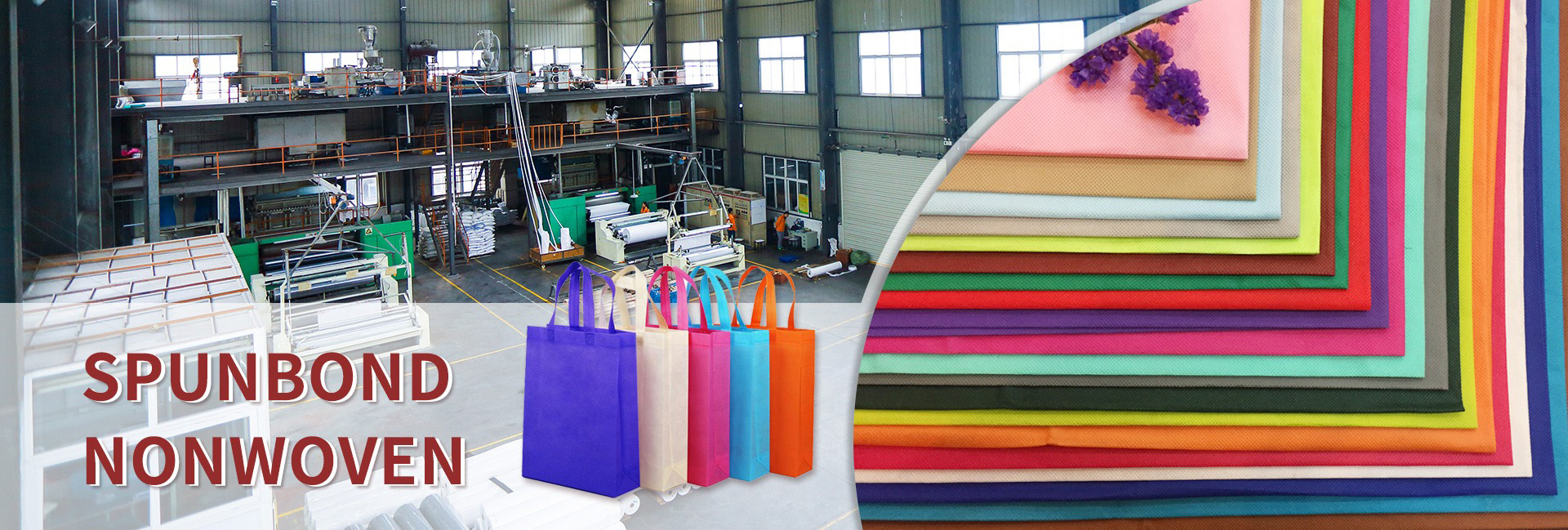Of course. Improving the tear resistance of spunbond nonwoven fabrics is a systematic project involving optimization of multiple aspects, from raw materials and production processes to finishing. Tear resistance is crucial for safety applications such as protective clothing, as it directly relates to the material’s durability and safety when subjected to accidental pulling and abrasion.
The following are the main methods for improving the tear resistance of spunbond nonwoven fabrics:
Raw Material Optimization: Building a Strong Foundation
Selecting High-Toughness Polymers:
High Molecular Weight/Narrow Molecular Weight Distribution Polypropylene: Longer molecular chains and greater entanglement result in inherently higher strength and toughness.
Copolymerization or Blending Modification: Adding a small amount of polyethylene or other elastomers to polypropylene. The introduction of PE can alter the material’s crystallization behavior, improving flexibility and impact resistance, thereby effectively improving tear resistance.
Adding Impact Modifiers: Introducing specialized elastomers or rubber phases as stress concentration points can absorb and disperse tear energy, preventing crack propagation.
Using High-Performance Fibers:
PET and PP Composites: Introducing polyester fibers during the spunbonding process. PET, with its high modulus and strength, complements PP fibers, significantly enhancing the overall strength of the fiber network.
Using bicomponent fibers, such as “island-type” or “core-sheath” structures. For example, using PET as the “core” for strength and PP as the “sheath” for thermal adhesion, combining the advantages of both.
Production Process Control: Optimizing Fiber Network Structure
This is the most crucial step in improving tear resistance.
Spinning and Drawing Processes:
Improving Fiber Strength: Optimizing drawing speed and temperature allows for full orientation and crystallization of polymer macromolecules, resulting in high-strength, high-modulus monofilament fibers. Strong monofilaments are the foundation of strong fabrics.
Controlling Fiber Fineness: While ensuring production stability, appropriately reducing fiber diameter increases the number of fibers per unit area, making the fiber network denser and allowing for better load distribution under stress.
Web Forming and Reinforcement Processes:
Improving Fiber Orientation Randomness: Avoiding excessive unidirectional fiber alignment. Optimizing airflow web forming technology creates an isotropic fiber network. In this way, regardless of the direction of the tearing force, a large number of transverse fibers resist it, resulting in balanced high tear resistance.
Optimized Hot Rolling Process:
Bond Point Design: Employing a “small-dot densely packed” roll-up pattern. Small, dense bond points ensure sufficient bond strength without excessively disrupting fiber continuity, effectively dispersing stress within a larger fiber network and avoiding stress concentration.
Temperature and Pressure: Precisely controlling the hot rolling temperature and pressure ensures full fusion of fibers at the bond points without excessive pressure that could damage or embrittle the fibers themselves.
Hydroentangling Reinforcement: For certain materials, hydroentangling is used as an alternative to or supplement to hot rolling. High-pressure water jetting causes fibers to entangle, forming a three-dimensional mechanically interlocked structure. This structure often performs excellently in tear resistance and results in a softer product.
Finishing and Composite Technology: Introducing External Reinforcement
Lamination/Composite Technology:
This is one of the most direct and effective methods. Spunbond nonwoven fabric is composited with yarn, woven fabric, or another layer of spunbond fabric with a different orientation.
Principle: High-strength filaments in the mesh or woven fabric form a macroscopic reinforcing skeleton that significantly hinders tear propagation. This is precisely the structure commonly used in high-barrier protective clothing, where tear resistance primarily comes from the outer reinforcing layer.
Impregnation Finishing:
The spunbond fabric is impregnated with a suitable polymer emulsion and then cured at the fiber intersections. This significantly increases the bonding strength between fibers, thereby improving tear strength, but may sacrifice some softness and breathability.
Summary and Key Points
To improve the tear resistance of spunbond nonwoven fabrics, a multi-pronged approach is typically required:
Level | Method | Core Role
Raw Materials | Use high-toughness polymers, blend modification, add elastomers | Enhance the strength and extensibility of individual fibers
Production Process | Optimize drafting, form isotropic fiber webs, optimize hot rolling/hydroentangling processes | Construct a strong, uniform fiber network structure with good stress dispersion
Finishing | Laminate with yarns, impregnate | Introduce external reinforcement systems to fundamentally prevent tearing
The core idea is not only to make each fiber stronger, but also to ensure that the entire fiber network structure can effectively disperse and absorb energy when facing tearing forces, rather than allowing stress to concentrate and spread rapidly at a single point.
In actual production, the most suitable combination should be selected based on the product’s end use, cost budget, and performance balance (such as air permeability and softness). For example, for high-performance hazardous chemical protective clothing, the sandwich composite structure of “high-strength spunbond fabric + high-barrier film + mesh reinforcement layer” is the gold standard for simultaneously achieving high tear resistance, puncture resistance and chemical protection.
Dongguan Liansheng Non woven Technology Co., Ltd. was established in May 2020. It is a large-scale non-woven fabric production enterprise integrating research and development, production, and sales. It can produce various colors of PP spunbond non-woven fabrics with a width of less than 3.2 meters from 9 grams to 300 grams.
Post time: Nov-15-2025

